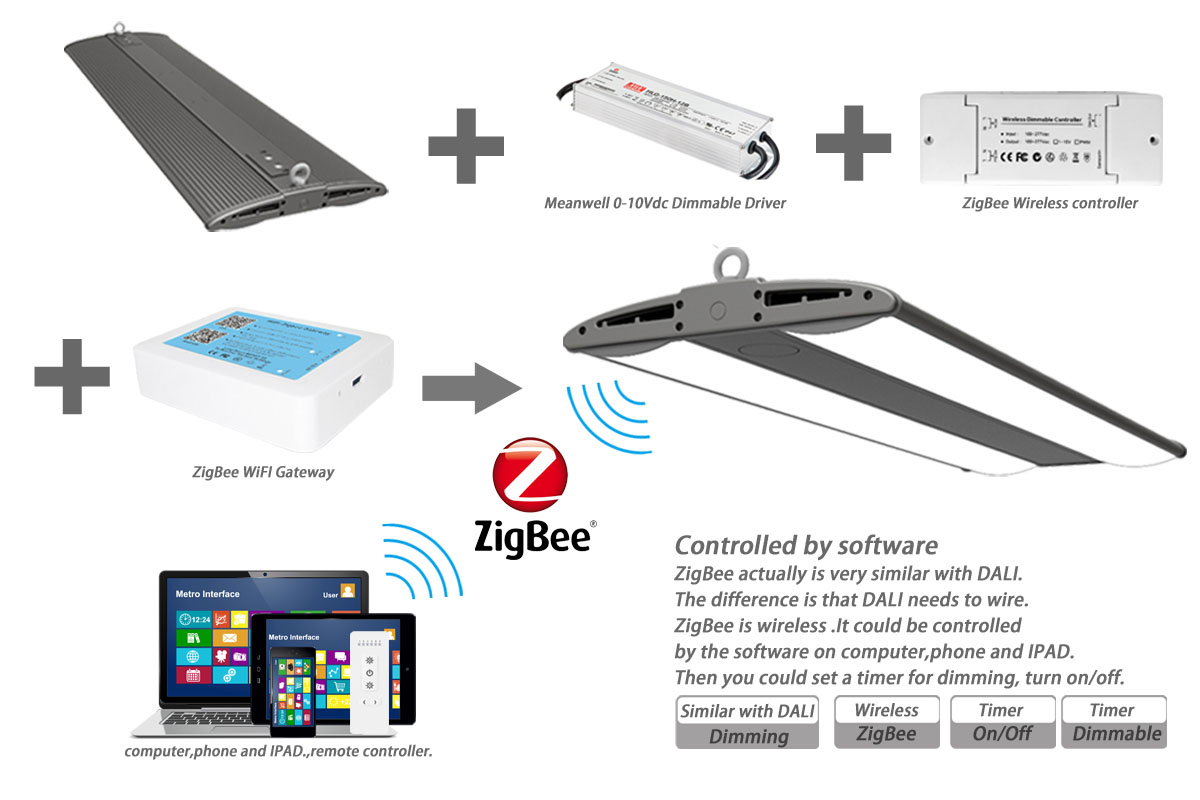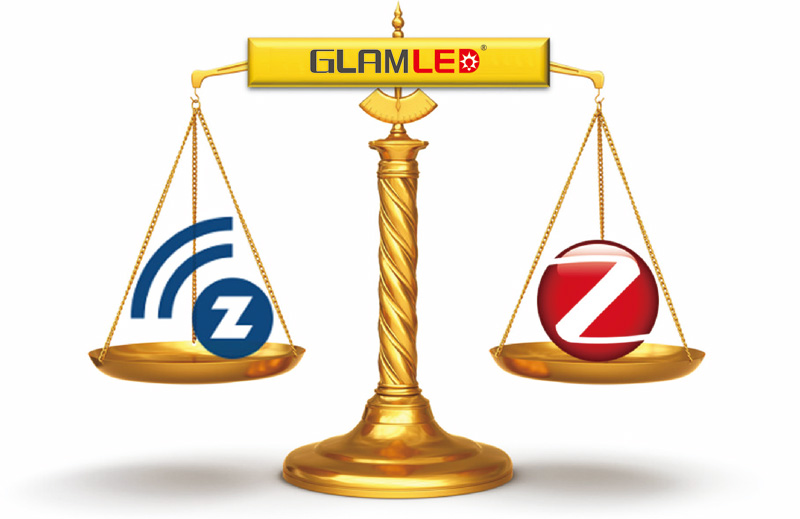If you are looking into building a network of smart home devices, you have probably heard of Z-Wave and ZigBee. They are wireless protocols that were designed with home automation in mind. They share some qualities, such as low-power and high reliability, that are essential for smart home applications. However, they have some important differences that I will explain shortly. Hopefully, GLAMLED Lighting can help you start to piece together this home automation puzzle so that you can choose the products that will best fit your needs.
How It Works?Network Configuration
Most people are familiar with WiFi networks. A WiFi network is typically referred to as a star network. In a star network, each device communicates directly with (and only with) the central hub. If a device is out of range of the central hub, that device will not be part of the network.


Both ZigBee and Z-Wave are considered to be mesh networks. In a mesh network, the signal originates from the central hub just like the star network. However, devices don’t need to communicate directly with the central hub. A mesh networkallows each device in the network to operate as a repeaterand pass the signal on to another device. This allows mesh networks to be more versatile. They cancover greater distances and even work around obstacles.
Compatibility
ZigBee’s open technology is the language for thousands of smart home devices. Many different companies create devices that communicate with ZigBee’s technology, allowing you to seamlessly integrate products from a variety of manufacturers.
The Z-Wave Allianceconsists of 375 companies and 1,500 products that are all interoperable with each other. Nine out of ten leading security and communication companies in the U.S. use Z-Wave in their smart home solutions. Z-Wave technology has 325 manufacturers, which means that there are many options for devices that will communicate with each other.
Security
ZigBee uses AES-128 encryption — the same level of protection major banks use — and network keys to keep your devices secure. However, because devices using ZigBee technology are manufactured by many different companies, standards vary. ZigBee device makers recently received criticism for theirminimal securitymeasures when researchers demonstrated that even a door lock was easily vulnerable to potential hackers.
Every Z-Wave network, and the devices within each network, are assigned unique IDs that communicate with your hub. This makes it so another hub can never control your hub’s connected devices. Devices like door locks and alarms require even more security, so Z-Wave also uses AES-128 encryption.
Future-proofing
The ZigBee Alliance consists of nearly 400 member organizations that use, develop, and improve ZigBee’s open-standard wireless connection. Customers can easily mix and match home automation devices from different companies and add new devices as their needs change.
You can update your smart home devices — including Amazon Echo or Apple Watch — as often as you would normally. As long as the devices continue to speak Z-Wave’s language, Z-Wave will be able to act as your smart home’s central hub.
Biggest Pro
ZigBee prides itself on requiring so little power that devices can last up to seven years on one set of batteries. They also have a Green Power option that allows customers to select devices that do not require batteries at all.
Z-Wave is user friendly and provides a simple system that customers can set up themselves. If you prefer, you can also hire a professional to install the system in your home. Once you purchase your Z-Wave hub, you only need to decide which devices you want to connect.
Biggest Drawback
ZigBee was developed for use in the utility and retail industries. While it is also popular for home use, it requires that consumers have some technical knowledge for setup and maintenance.
Depending on how many devices you choose, your Z-Wave system may be expensive. Z-Wave products typically range from $40 to $100 each, which can add up quickly if you want to connect many devices.
Who It Serves Best
ZigBee is perfect for the DIYer or technology expert who wants a system they can customize with their preferences and install themselves. You can “control your world” with the scalable and compatible ZigBee network.
Z-Wave is ideal for someone with a basic understanding of technology who wants to keep their home automation secure, efficient, simple to use, and easy to maintain. Z-Wave works with the most popular brands and smart home devices, so customers shouldn’t experience limitations.









